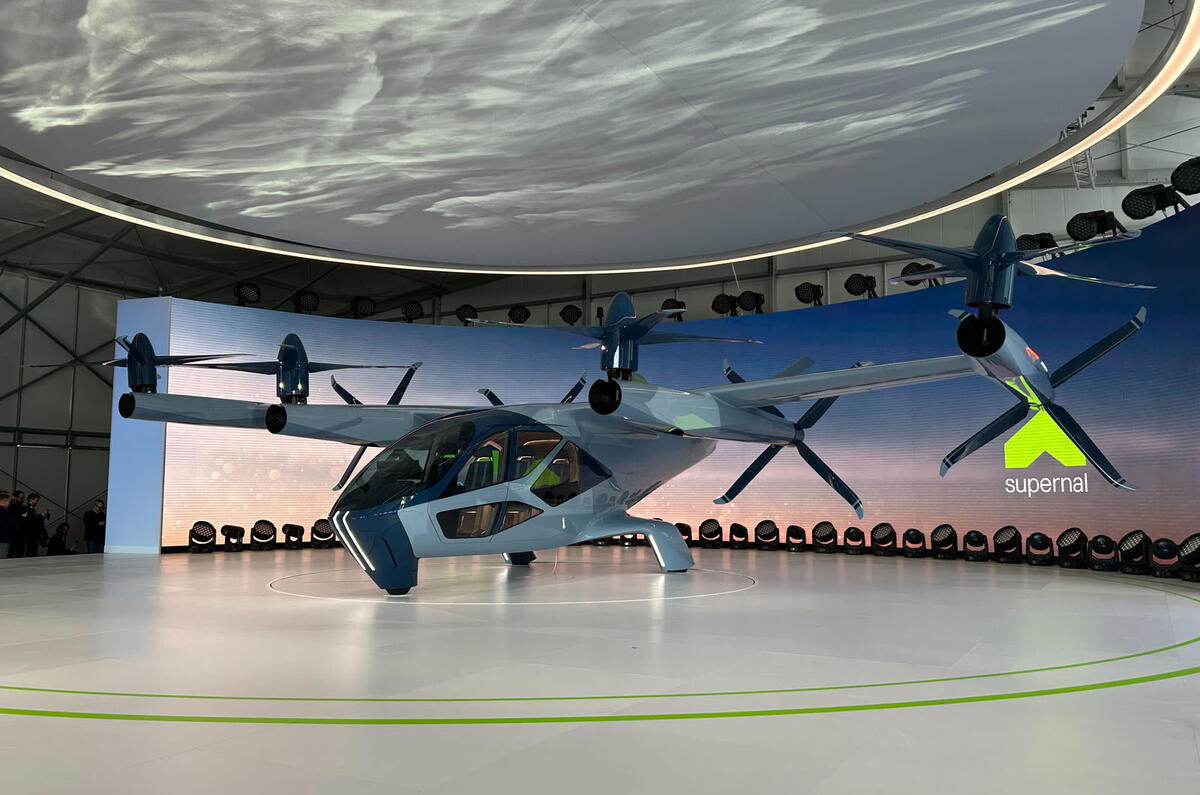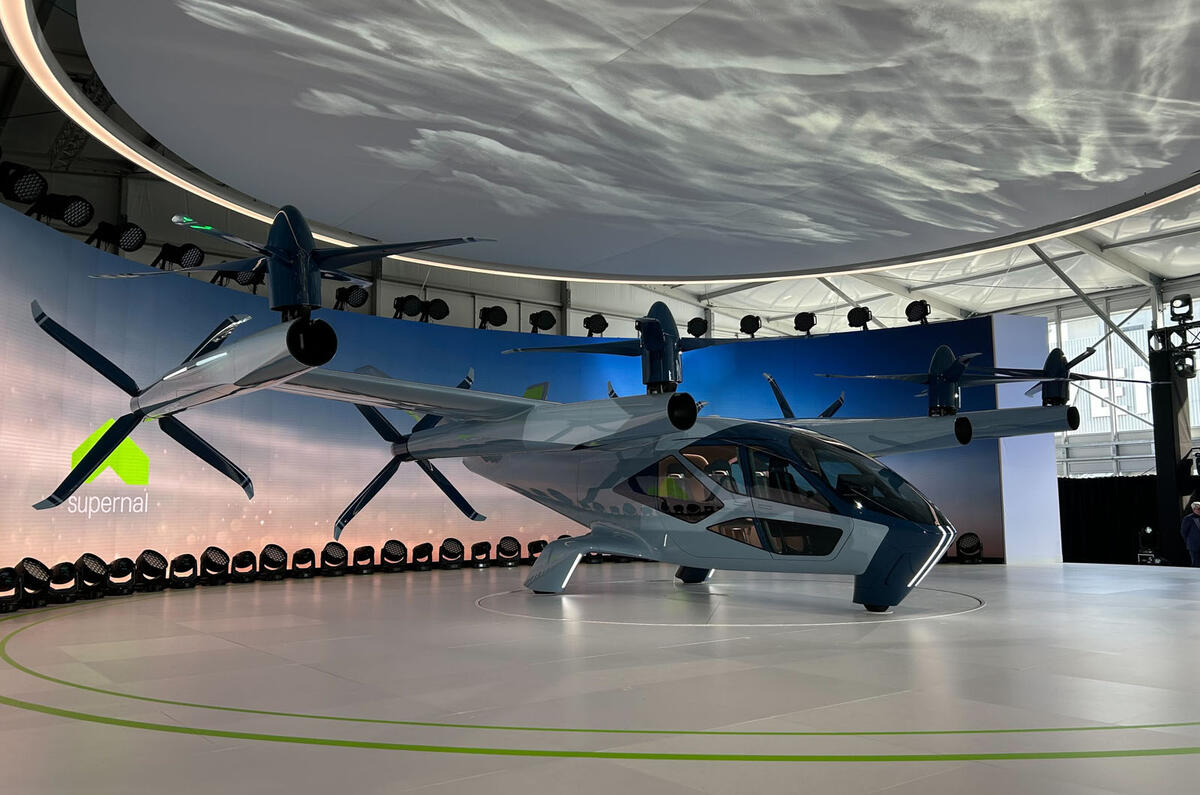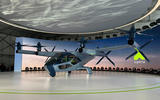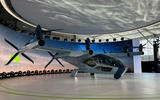Hyundai air mobility arm Supernal plans to put its new S-A2 aircraft into production in 2028 ahead of what it expects to be a huge increase in demand for electric aircraft as an alternative to taxis in cities.
The Supernal S-A2, described as an electrical vertical take-off and landing (eVTOL) aircraft, has been unveiled at CES in Las Vegas and is a follow-up to the S-A1 first shown in 2020. It can seat up to five people including the pilot and is electric powered.
The styling of the S-A2 has been led by Hyundai group design chief Luc Donckerwolke and is described by the designer as “auto meets aero”.
The S-A2 is the latest expansion from the group beyond passenger cars, something also seen at CES by the group with the launch of Kia’s new commercial vehicle division.
The Supernal project has been led by Hyundai president Jaiwon Shin, who spent most of his career at NASA. Shin said projections in the aviation industry show that there is set to be a huge expansion of eVTOL aircraft in the future as alternatives to taxis. The market is potentially “hundreds of thousands” of aircraft of this type, compared with a total global commercial aircraft fleet today of no more than 30,000 units.
“Nobody knows yet but with the convenience, time saving and safety, people will start using these mobility options,” Shin told Autocar. “We need to be ready to meet the demand of hundreds of thousands of aircraft. We don’t know how many it will be, but this is what the aviation industry is forecasting and the advantage we have in mass-production capability in the group.”
The last point is what Shin sees as a huge advantage for the Hyundai group in going into aviation: its experience of mass production of vehicles. “Traditional aviation is complex and with lots [of] 'touch labour', so manufacturing is hard to compare [with automotive],” said Shin. “How can we leverage the automotive side of mass production to aviation?”
To that end, Supernal has been working with the automotive division on manufacturing, as well as battery and powertrain technology and the wider Hyundai design team.

Donckerwolke told Autocar that designing aircraft instead of cars was “like being in a bigger toy store”.
“I define myself as an industrial designer and mobility designer,” he told Autocar. “At Hyundai, we’re doing more than just cars. The future of our group will allow us to do much more than urban air mobility. I consider a project like this not only beneficial to designing an aircraft but then going back to designing cars with a wider horizon.
“I used three of my [car] designers and a goal was to get them out of their comfort zone. A designer that stays in their comfort zone is becoming an old stylist. We must accept all challenges to get out of the typical design and styling solutions that are clichés of the automotive world.
“For me, it’s a fantastic to receive a message from the chairman to ask me about this. There is no such thing as car designers any more. It’s mobility: that’s the future. It’s not just lines and light graphics. That’s the old world and the future is challenging everything.”
The S-A2’s USP is being electric powered to ensure that is much quieter than traditional helicopters and light aircraft. Supernal quotes it as being as quiet as a dishwasher, at 65dB during vertical take-off and 45dB when cruising. It can cruise at 120mph and at altitudes of up to 1500ft. It is designed for shorter journeys of between 25-40 miles. It uses eight tilting rotors.
While battery-electric powered for now, Supernal could equip the S-A2 with hydrogen fuel cell technology in future generations, according to Shin.
Flight tests will begin 2025 and pre-production vehicles will test in 2026 and 2027.











Join the debate
Add your comment
Bit back to the future, have we time jumped to 2049?, if we can't control our roads, how is flying Taxis going to work?